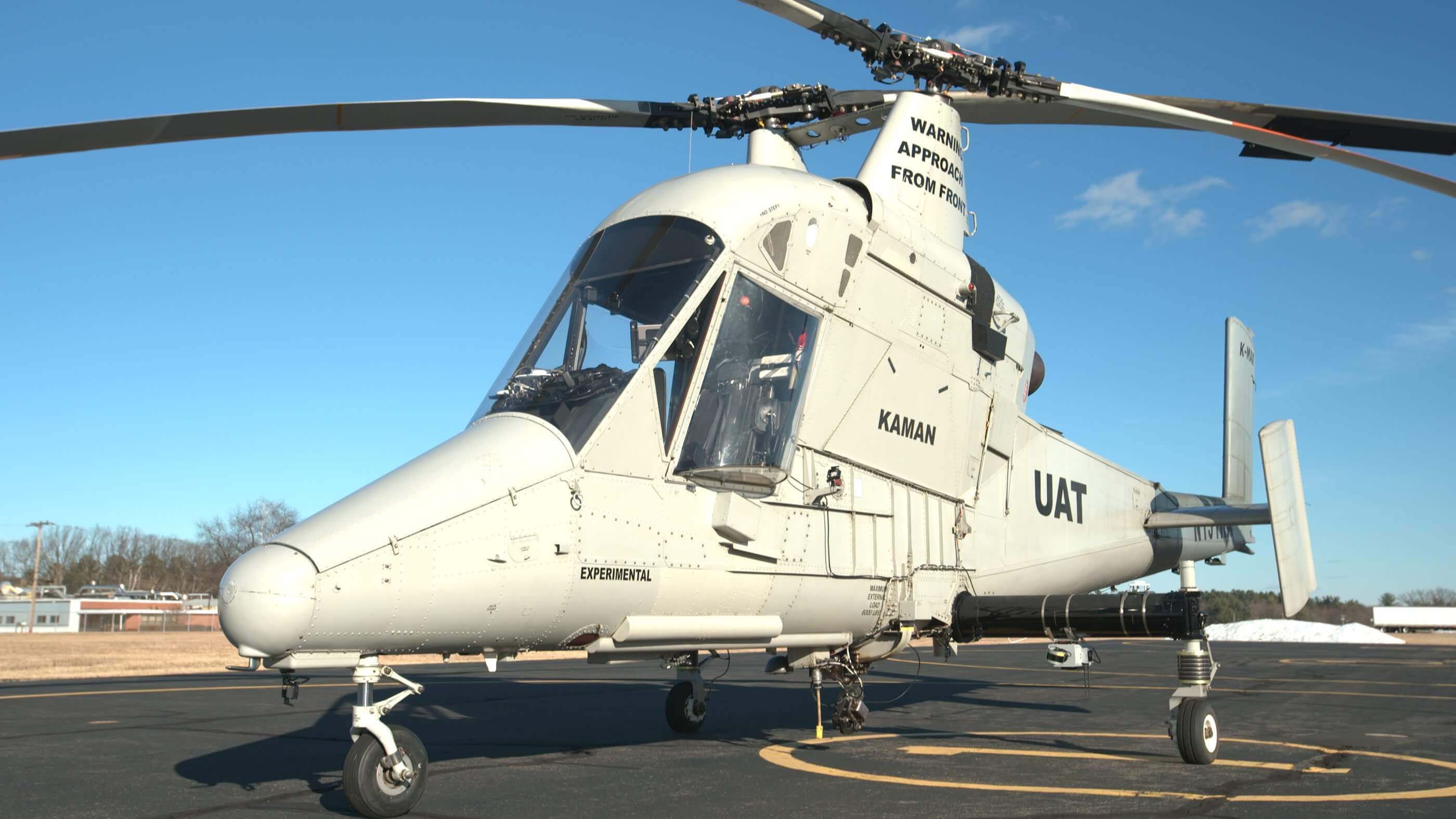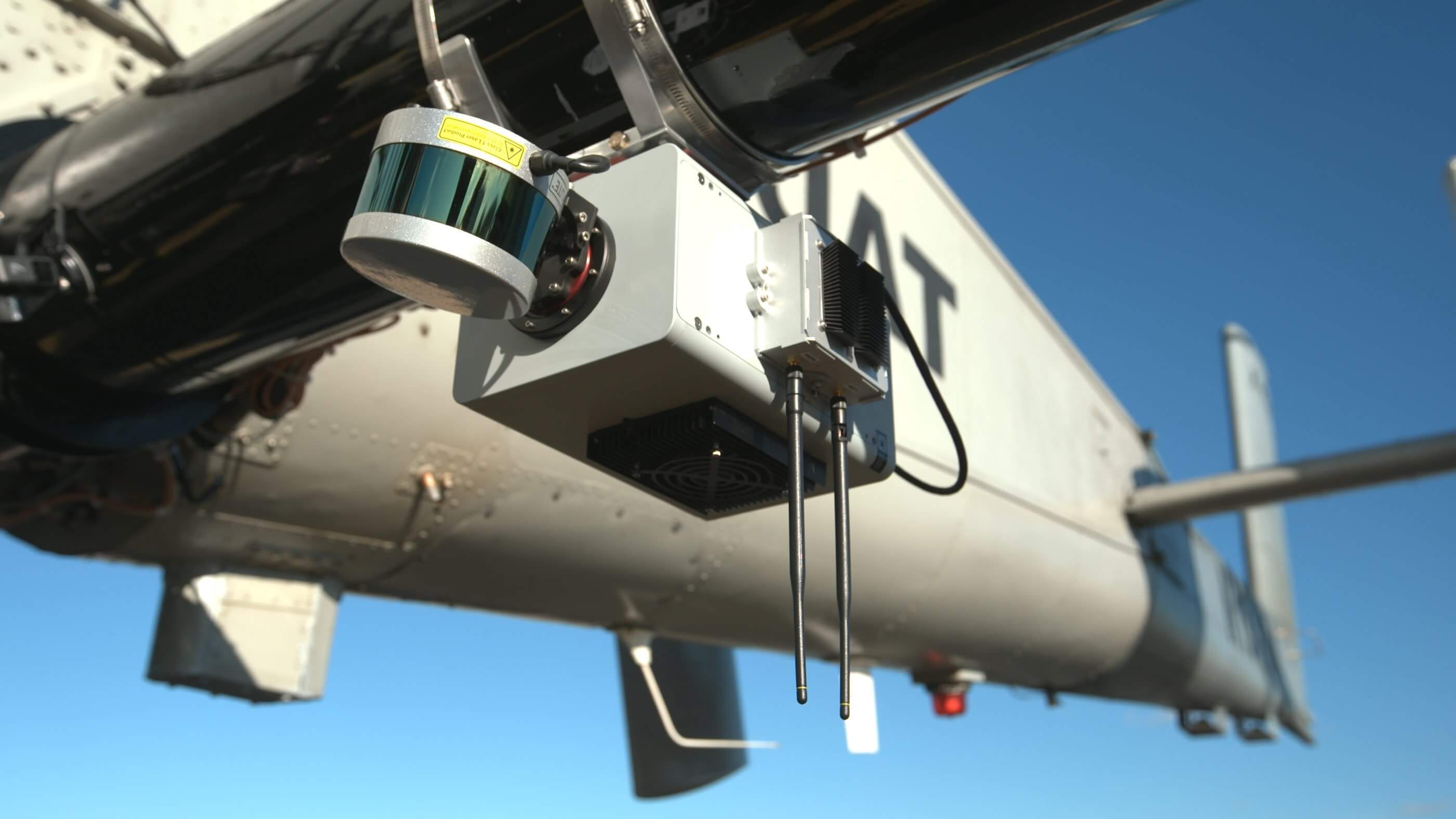Kaman’s unmanned K-Max helicopter is getting an autonomy upgrade that will allow it to actively sense and respond to its surroundings without relying on a human operator.
Pittsburgh, Pennsylvania-based Near Earth Autonomy released a video this week that provides a glimpse at the aircraft’s progress. Near Earth is collaborating with Kaman on the autonomy upgrade in a project funded by the U.S. Naval Air Systems Command (NAVAIR).
The video shows a K-Max equipped with Near Earth’s autonomy package in flight at Kaman’s headquarters near Bloomfield, Connecticut. (The aircraft has a safety pilot on board, which simplifies the approval process for this type of flight testing.)
Computer animations depict how the aircraft gathers information from its onboard cameras and lidar to identify obstacles and evaluate the suitability of various landing areas. The goal, according to Near Earth CEO Sanjiv Singh, is to enable the aircraft to “fly safe and land safe” without the need for constant human input.
This sophisticated decision-making capability represents a significant step up from the autonomy package in the first generation of unmanned K-Max helicopters, which flew missions in Afghanistan for the U.S. Marine Corps between 2011 and 2013.
Designated as CQ-24A, these aircraft moved over 4.5 million pounds (two million kilograms) of cargo between forward operating bases and remote outposts during the 33 months they were deployed in country. They were credited with replacing the equivalent of 900 ground convoys, eliminating 46,000 hours of exposure to improvised explosive devices, direct fire, and other threats to ground troops.

But the helicopters themselves weren’t “smart.” As Singh explained, they were programmed to fly between a series of GPS waypoints, with remote human pilots taking control of the aircraft as they approached cargo drop-off points or landing zones. “It was fairly basic technology — we’re talking about something that’s about a decade old,” he said.
And the remote pilots faced challenges in responding to changing operating conditions in a timely fashion. In June 2013, one of the unmanned K-Maxes crashed at an outpost while trying to deliver an approximately 2,000-lb. (900-kg) load of underslung cargo. According to a report in the Washington Post, the load began oscillating after the aircraft approached the outpost with an unexpected tailwind, and the remote pilots did not react quickly enough to maintain control of the helicopter.
Singh said it is still too early in the current project to say how the new-generation unmanned K-Max would handle this type of situation; the aircraft has yet to do any flying with underslung loads. But he said that Near Earth has been thinking about this “important problem” in the context of other projects as well.
This is not Near Earth’s first foray into autonomous rotorcraft. The company worked with the Office of Naval Research in 2014 to develop an autonomy package for full-sized helicopters through the Autonomous Aerial Cargo/Utility System (AACUS) program. That project was a finalist for the prestigious Collier Trophy in 2017, although Singh described it as primarily a proof of concept.
Since then, the company has been refining its autonomy solution in small drones. Last year, it validated its obstacle avoidance technology as part of a Joint Capability Technology Demonstration for the U.S. military, when 16 active-duty U.S. Army soldiers and Marines used the technology to safely execute 64 resupply missions with a small unmanned aircraft system at Fort A.P. Hill, Virginia.

Now the autonomy package is back in a full-size helicopter in the K-Max, which is capable of carrying up to 6,000 lb. (2,720 kg) of cargo on its hook. “There’s a lot to do at this scale,” Singh said. “And I think that our experience at this scale is going to give us an idea of what it is we should be doing next.”
While NAVAIR is pursuing the technology for military logistics missions, there is also interest in using autonomous helicopters for commercial applications including cargo transportation and aerial firefighting. Earlier this year, Kaman announced it was developing a new unmanned K-Max kit for the commercial market, with Helicopter Express Inc. and Swanson Group Aviation named as launch customers. However, there are still many unanswered questions about how such an aircraft will integrate into existing operations and airspace.
Singh suggested that the NAVAIR project — the current phase of which will run through fall of next year — could serve as a kind of “concept car” for the commercial industry as it works toward a viable concept of operations for autonomous helicopters.
“This program we’re doing is phenomenal for advancing the autonomy side, but it’s also going to be great because commercial customers will see this and say, ‘Well, that’s the part I want’ or, ‘If you could do this variation, that would be fantastic,'” he said.
Singh pointed out that Near Earth’s autonomy package can be applied to other helicopter models, too. “I think that a lot of people are very interested in the idea of autonomous rotorcraft for logistics — and that spans all kinds of configurations, not just the K-Max.”









